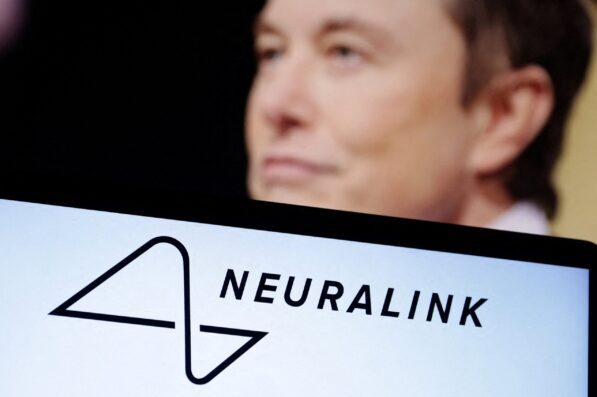Washington (AFP) – Neuralink, Elon Musk’s brain-implant company, has won US approval to test on humans. Here is what to know about the multi-billionaire’s dream project to enable the human brain to communicate directly with computers.
The aim is to supercharge human capabilities, treat neurological disorders like ALS or Parkinson’s, and ultimately achieve a symbiotic relationship between humans and artificial intelligence
It could also potentially blur the line between human consciousness and computing, an idea that has long excited technologists, while feeding nightmares of a dystopian future taken over by cyborgs.
Neuralink is a neurotechnology company co-founded by Musk along with a team of scientists and engineers in 2016 to build direct communication channels between the brain and computers.
- Brain-Machine Interface (BMI): Neuralink aims to create a BMI system that allows direct communication between the brain and external devices. This involves implanting tiny, flexible electrode threads into the brain, which can monitor and stimulate neural activity.
- Neuralink’s Implant: The centerpiece of Neuralink’s technology is a small, coin-sized device called the “Link.” It houses thousands of ultra-thin electrodes that can be implanted into the brain. The Link is designed to be minimally invasive, with a surgical robot assisting in the electrode insertion process.
- Neural Recording: The Link’s electrodes can record and transmit neural activity data, enabling researchers to study and understand brain function in unprecedented detail. This information can be used to develop treatments for various neurological conditions.
- Neural Stimulation: In addition to recording neural activity, Neuralink’s technology can also stimulate specific areas of the brain using electrical signals. This feature holds potential for treating neurological disorders, such as Parkinson’s disease, by modulating neural activity and restoring normal brain function.
- Long-Term Goals: While Neuralink’s initial focus is on medical applications, the long-term vision of the company extends beyond therapeutic uses. Elon Musk has expressed a desire to develop a symbiotic relationship between humans and artificial intelligence (AI), enabling humans to merge with AI and enhance cognitive capabilities.
Researchers hope the implant’s powers will also treat paralysis, spinal cord injuries and brain disorders.
It could also potentially blur the line between human consciousness and computing, an idea that has long excited technologists, while feeding nightmares of a dystopian future taken over by cyborgs.
Many competitors
According to data company Pitchbook, California-based Neuralink has more than 400 employees and has raised at least $363 million.
Though he wins most of the headlines, Musk is hardly alone in trying to make advances in the field, which is officially known as brain-machine or brain-computer interface research.
Hit with delays, the tycoon had reportedly reached out to join forces with implant developer Synchron about a potential investment. Its implant version does not require cutting into the skull to install it, unlike Neuralink’s Link.
The Australia-based Synchron implanted its first device in a US patient in July 2022.
Another implant project, but designed for research purposes, is from company Blackrock Neurotech and has also received FDA approval for human testing.
A Neuralink co-founder has also split from Musk and raised venture capital for his own project at a startup called Science.
Other companies seeking to make a play in the sector include BrainCo, Kernel and CTRL-Labs, now a part of Meta’s virtual reality division.
Animal testing
The FDA approval for human testing comes at a great relief for Neuralink which until now had been testing its implants in monkeys and other animals.
Reuters reported in December that the United States Department of Agriculture (USDA) had opened an investigation into potential violations of the Animal Welfare Act at Neuralink.
The report estimated that Neuralink killed about 1,500 animals, including more than 280 sheep, pigs and monkeys for research since 2018.
The USDA refused to confirm or deny the report to AFP at the time.
Rival killed fear sheep
Arch rival Synchron reportedly killed only about 80 sheep as part of its research, according to documents seen by Reuters.
AFP / News Agencies


Leave a Reply
You must be logged in to post a comment.